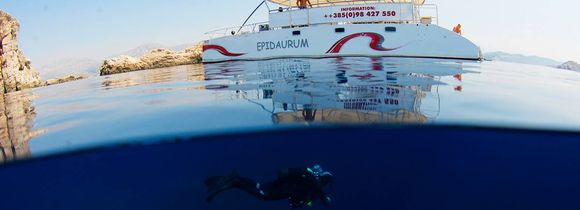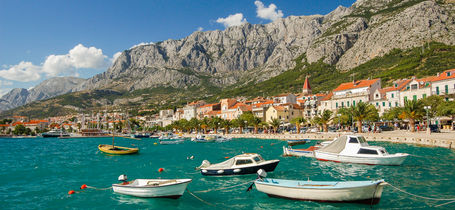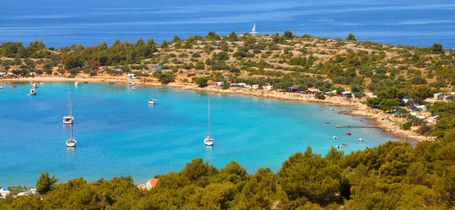Dubrovnik Diving
Dubrovnik, a city in Croatia mixes a rich history on land with a multitude of diving opportunities in the waters of the Adriatic Sea. Clear waters combined with every colour of the rainbow, an interesting collection of wrecks, some exhilarating rock formations including caves and tunnels and so much more!
Diving in Dubrovnik
Dubrovnik is one of the most well-known cities of Croatia and it lies in the south of the country, on the famous Dalmatian Coast on the Adriatic Sea. It is well known for its rich history which is well represented through the architecture of the old town which was named an UNESCO World Heritage Site in 1979. Just as there is a rich history on land, there are also rich-marine life filled waters around its coast. The many dive sites can be reached either directly from shore or by speedboat, but all guided by the experts from the handful of dive centres in this city. There are a collection of thrilling, exciting, and colourful dives to be done here. These are made up of an assortment of wrecks, drop offs, coral walls, numerous caves, caverns and flourishing reefs. The clear waters allow the sunlight to pierce through and make all the colours of the reefs and marine life become more vibrant. Whether divers are hoping to reach new depths, capture some scenes on camera or take dive courses, there are an almost endless amount of opportunities here to cater to a wide range of interests.
Best time to dive
Dubrovnik has a Mediterranean climate which means hot summer winters with a lot of rain. The air temperatures here range between a cold 8 degrees Celsius in the midst of winter, between December and February, and reaches up to 26 degrees Celsius in the summer months of July and August. The peak diving season lies between May and September when the waters are the most calm, the most clear and the warmest, with the least amount of rain and the least amount of currents. The water temperature here ranges between 12 and 24 degrees Celsius and the visibility is on average good throughout the year and ranges between 10 metres and 35 metres on the best days.
Types of diving
What makes this an attractive diving destination is that the excitement level is equal for divers of all levels. For experienced and technical divers, there are thrilling drop offs which drop down past 80 metres and some deeper wrecks. For the more novice divers here are some stunning shallow reefs which are filled to the brim with marine life as well as some shallow wrecks, shallow caves, tunnels and caverns. These shallow reefs, which some of which are reached from shore, are the ideal location for night dives and also for underwater photographers wanting to capture the vibrant colours of the underwater world here. The dive sites are reached either directly from shore or from a speedboat after a short ride.
What to see
The reefs, the wrecks and the caves here in Split attract many different species which results in colourful dives filled with marine life for the divers visiting this area. The reefs are made up of different species of Hard Corals such as the famous Red Corals, Soft Corals, Anemones, Sea Sponges such as Sulfur Sponges, Algae such as Pink Algae and much more. This flora attracts species such as different species of Lobsters, Crabs and other Crustaceans, Sea Snails, Sea Slugs and Starfish. Some of the larger critters include Conger Eels, Scorpion Fish, Octopus, Moray Eels, the majestic Seahorses, Triplefins and more. There are also many fish species which usually appear in schools including reef fish such as Damselfish and many other colourful species. On the luckiest days, divers have spotted Sea Turtles and even Dolphins!
Best places to dive
Maros Cave is an exciting cave dive which allows more experienced divers to really get a cave experience. Divers must enter one by one through a narrow opening which will lead them inside where there is a plethora of marine species to admire. The cave does lie deeper than 30 metres so it is only more experienced divers.
The Abyss is one of those dive sites that has a bit of everything; with coves, a reef wall, a cave which is lit up by sun rays and a small wreck, a lot of marine life and all at shallow enough depths for all divers to go and experience it.
Lokrum Island lies close to the old town and diving here is a unique experience as divers dive through a tunnel which leads to a lake in the middle of the island!
Sveti Andrija is an island which holds the most impressive drop off in the area. The cliff starts at 3 metres and drops down to past 80 metres into the blue. A combination of a sandy seabed and a coral wall means many marine species inhabit this area.
The Little Africa Reef is a dive done straight from shore which is most popular for the high abundance of marine life at shallow depths.



